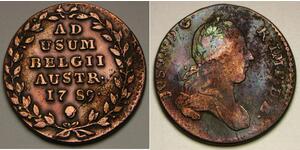(售价 $43.0)
Emperor Constantine (306-309 AD) AE Follis Coin. Roma in Temple. Rome mint!
State: Roman Empire
Denomination: Follis
References: RIC 196.
Mint Place: Rome (Italy)
Mint Year: Struck 306-309 AD
Condition: Reverse struck off-center, otherwise VF+
Material: Bronze
Diameter: 27mm
Weight: 7.1gm
Obverse: Laureate head of Emperor Constantine right.
Legend: CONSTANTINVS NOB CAES.
Reverse: Roma seated facing, head left, in hexastyle temple, holding globe and sceptre.
Legend: CONSERVATORES VRB SVAE
Exergue: R * Q.
All offered coins are guaranteed to be ancient and as described.
Constantine the Great (Latin: Flavius Valerius Aurelius Constantinus Augustus; 27 February c. 272 – 22 May 337), also known as Constantine I or Saint Constantine, was Roman Emperor from 306 to 337. Constantine was the son of Flavius Valerius Constantius, a Roman army officer, and his consort Helena. His father became Caesar, the deputy emperor in the west in 293. Constantine was sent east, where he rose through the ranks to become a military tribune under the emperors Diocletian and Galerius. In 305, Constantius was raised to the rank of Augustus, senior western emperor, and Constantine was recalled west to campaign under his father in Britannia. Acclaimed as emperor by the army after his father's death in 306, Constantine emerged victorious in a series of civil wars against the emperors Maxentius and Licinius to become sole ruler of both west and east by 324.
As emperor, Constantine enacted many administrative, financial, social, and military reforms to strengthen the empire. The government was restructured and civil and military authority separated. A new gold coin, the solidus, was introduced to combat inflation. It would become the standard for Byzantine and European currencies for more than a thousand years. The first Roman emperor to convert to Christianity, Constantine played an influential role in the proclamation of the Edict of Milan, which decreed religious tolerance throughout the empire. He called the First Council of Nicaea in 325, at which the Nicene Creed was professed by Christians. In military matters, the Roman army was reorganised to consist of mobile field units and garrison soldiers capable of countering internal threats and barbarian invasions. Constantine pursued successful campaigns against the tribes on the Roman frontiers—the Franks, the Alamanni, the Goths, and the Sarmatians—even resettling territories abandoned by his predecessors during the turmoil of the previous century.
The age of Constantine marked a distinct epoch in the history of the Roman Empire. He built a new imperial residence at Byzantium and named it New Rome. However, in Constantine's honor, the Romans called it Constantinople, which would later be the capital of what is now known as the Byzantine Empire for over one thousand years. Because of this, he is thought of as the founder of the Byzantine Empire. His more immediate political legacy was that, in leaving the empire to his sons, he replaced Diocletian's tetrarchy with the principle of dynastic succession. His reputation flourished during the lifetime of his children and centuries after his reign. The medieval church upheld him as a paragon of virtue while secular rulers invoked him as a prototype, a point of reference, and the symbol of imperial legitimacy and identity. Beginning with the renaissance, there were more critical appraisals of his reign due to the rediscovery of anti-Constantinian sources. Critics portrayed him as a despotic tyrant. Trends in modern and recent scholarship attempted to balance the extremes of previous scholarship.
Constantine—as the first Christian emperor—is a significant figure in the history of Christianity. The Church of the Holy Sepulchre, built on his orders at the purported site of Jesus' tomb in Jerusalem, became the holiest place in Christendom. The Papacy claimed temporal power through Constantine. He is venerated as a saint by Eastern Orthodox Christians, Byzantine Catholics, and Anglicans. The Eastern churches hold his memory in particular esteem, regarding Constantine as isapostolos or equal-to-apostles.
Only 1$ shipping for each additional coin purchased!
1 Corona 奥匈帝国 (1867 - 1918) 銀 弗朗茨·约瑟夫一世 (1830 - 1916)
本组有 25 钱币 / 17 售价
⇑
2 Liard Austrian Netherlands (1713-1795) 銅
本组有 4 钱币 / 4 售价
⇑

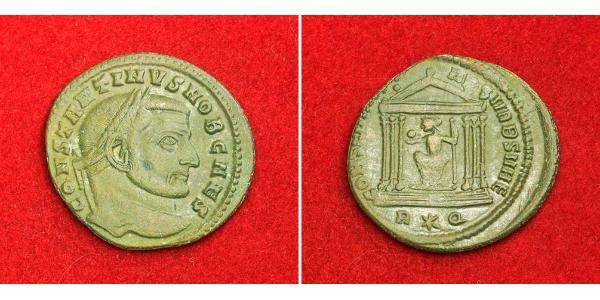





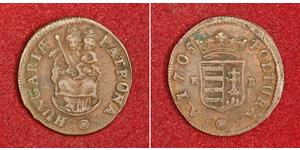




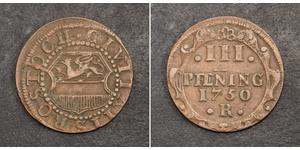



-300-150-AeIKqUpY7NEAAAFhroEy54Nz.jpg)
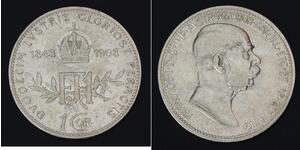
-300-150-N7QKX9ISGfEAAAFX9awaL_VH.jpg)
